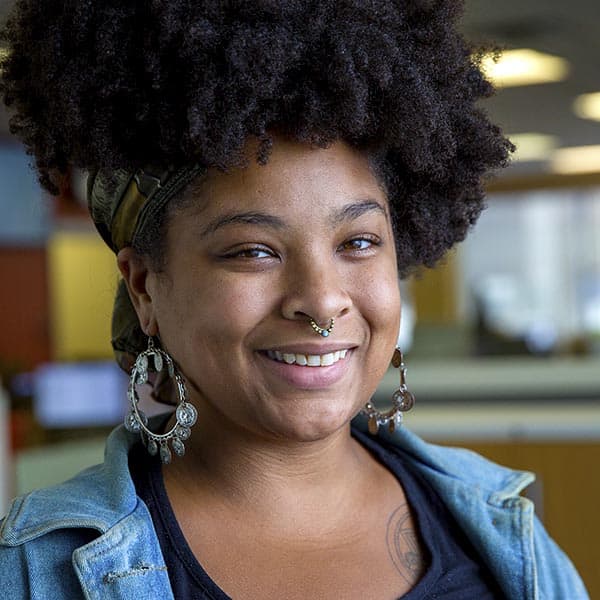Advertisement
Brookline’s Gateway Center moves to a larger, more accessible space

Before Jordana Simpson moved to Boston from Jamaica in 2002, she wasn’t making much art. Once she started living in the city, she found herself inspired.
“I saw art on the street, on the walls. That's how I came to love art,” she said.
Ten years ago Simpson joined Vinfen’s Gateway Center in Brookline as an artist and began to expand her craft. She mainly creates paintings using a variety of materials. “ I like to draw all different kinds of art. I love doing nature and I like drawing people."
Gateway Center has been serving adult artists with various disabilities since 1973. Simpson is one of nearly 100 artists who uses what Gateway offers — studio space, materials and art facilitators — all at no cost.
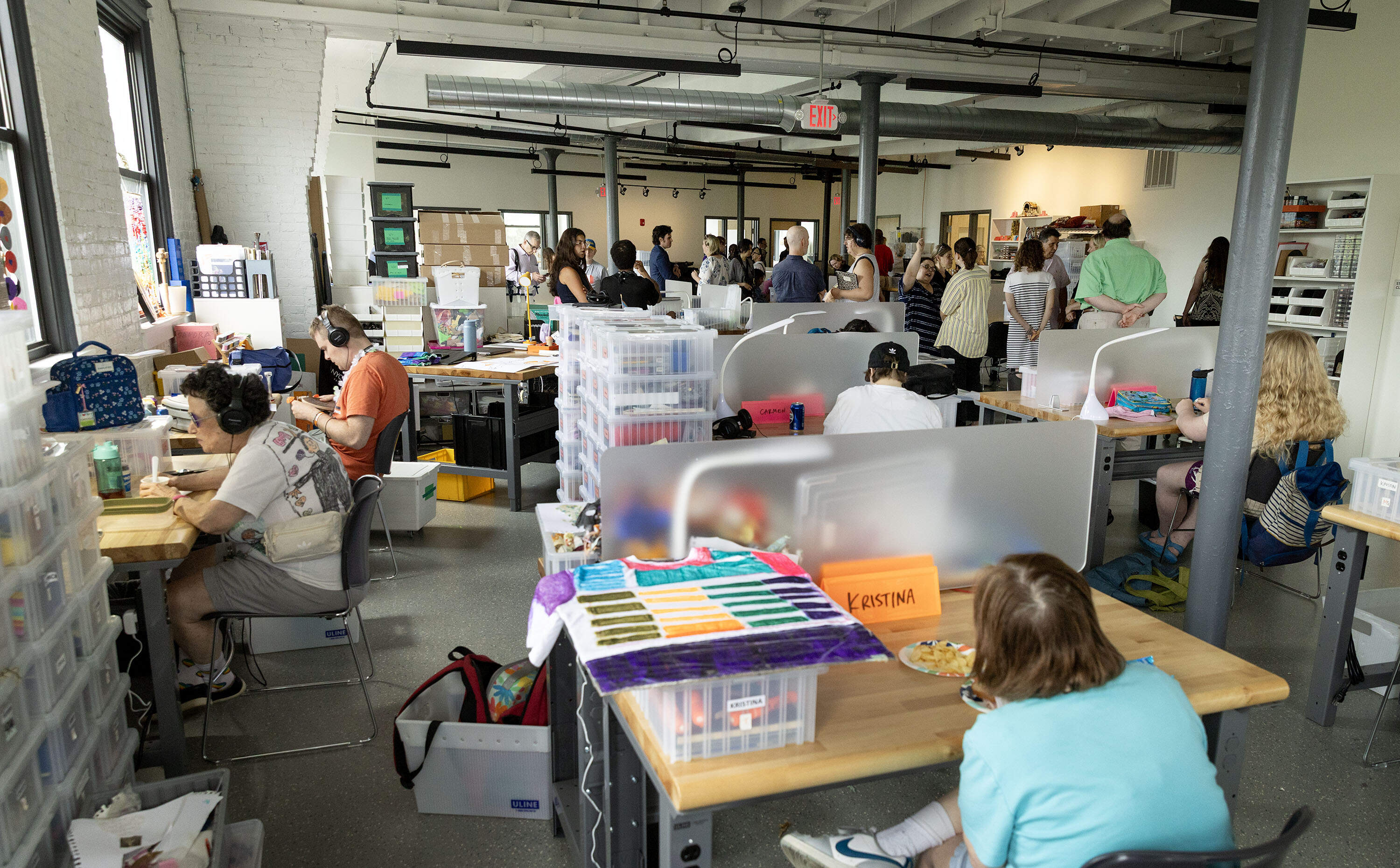
Now, Gateway Center is moving to a new home, just down the street from its former multi-level space that the center had occupied since 1980. In its previous space, Gateway had established a gallery and street level store where they exhibited and sold work by the center’s artists. The studios were located on the upper level, where artists had access to materials, desks and the tools and equipment to do things like make ceramics and weave.
A group of artists founded Gateway at a time when many hospitals and other spaces that served people with disabilities were closing their doors.
“The founders knew these folks also deserved access to a creative life,” explained director Gregory Liakos. “That was kind of the founding ideal. They started with eight artists, two of whom are still actually working with us.”
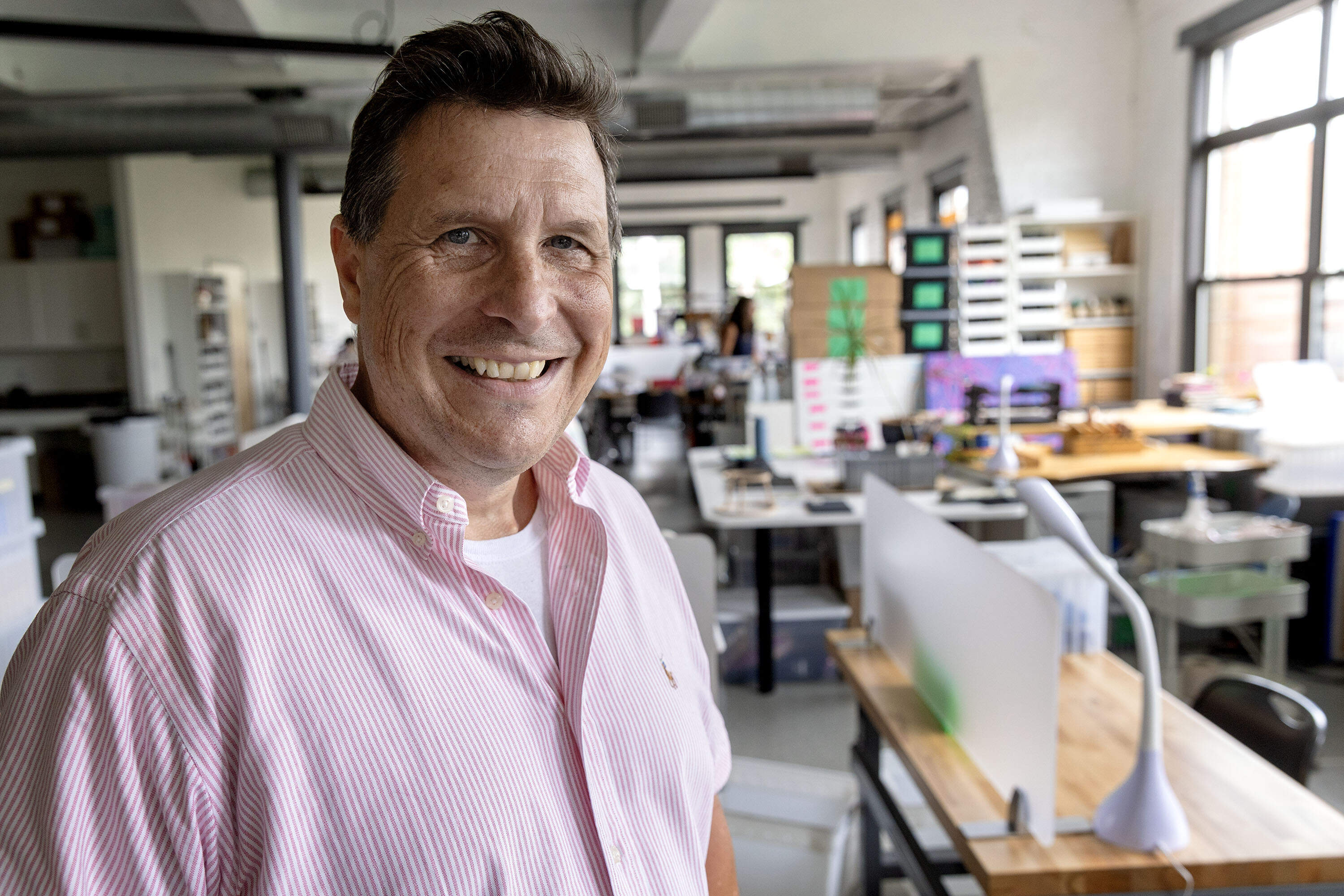
But the old space came with some issues, Liakos pointed out. There were stairs — which posed a problem for those using mobility aids. And the elevator wasn’t in the best working condition. “It meant that we could only serve artists who use wheelchairs or have mobility issues if they can go up and down the stairs in an emergency.”
After Gateway's original building was sold to a realty company, the organization explored the idea of moving. Eventually, they settled on a newer building on Fountain Street in Brookline, less than a 10-minute walk away. Staff took participating artists to the new building so that they could get familiar with the space and give their feedback.
The total cost of Gateway's move is $1 million. The new space has a large open floor plan and still has the same features that many of the artists love about Gateway. A street level area doubles the size of the gallery and store where artists can show and sell their wares. A large, functioning elevator takes people of all abilities up to the fourth floor, where the Center has set up artist stations and other equipment for projects like making textiles, jewelry and two-dimensional and three-dimensional art.
Advertisement
Many other arts organizations also call the building home, which is exciting for Liakos. “That's a big part of the goal of our program,” he said. “Is to give our artists a chance to see themselves and see their work in the larger context, in the creative community around Greater Boston.”
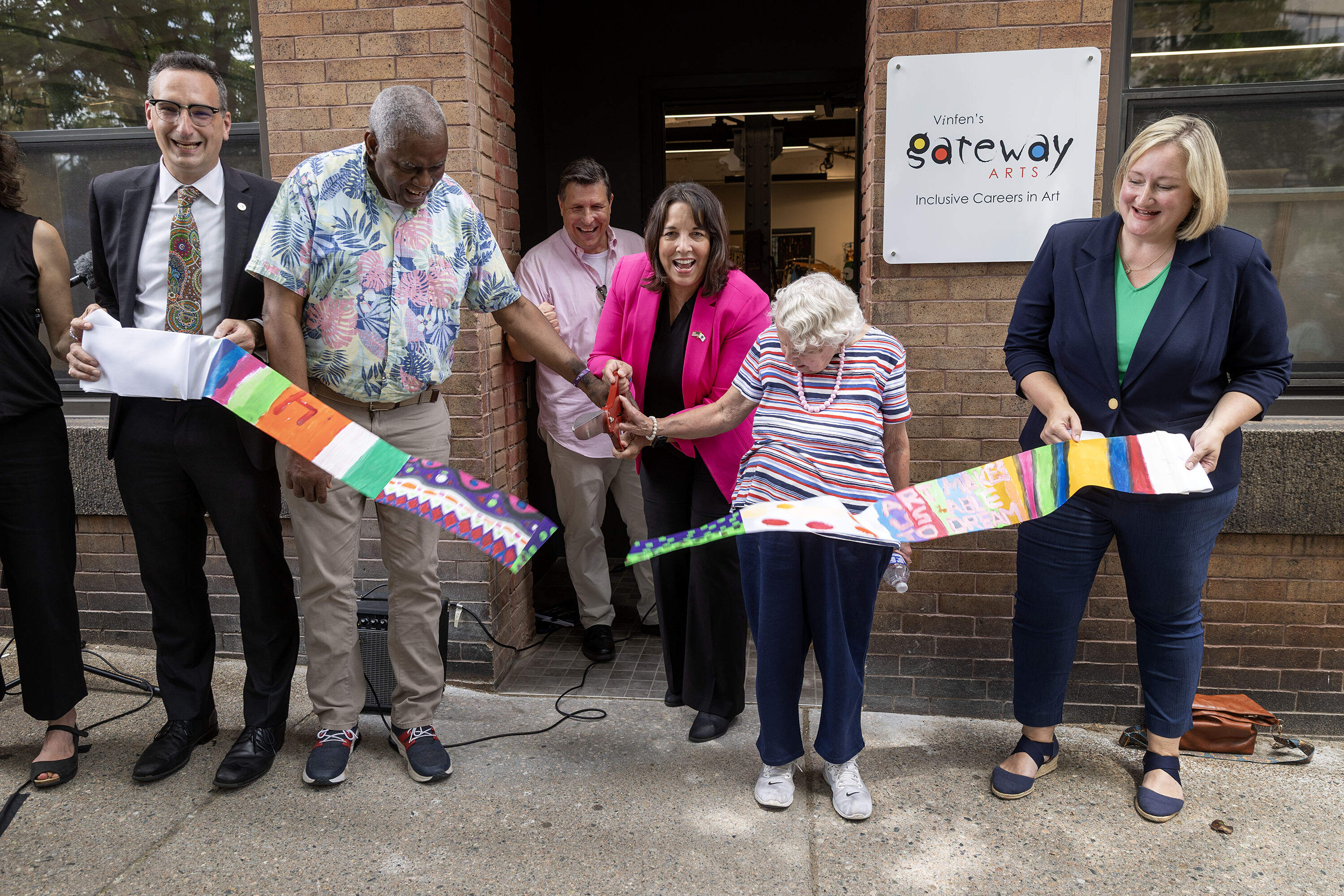
Liakos views the new space as an opportunity to continue dismantling barriers that exist for adults with disabilities.
“The deinstitutionalization era really isn't all that long ago. In fact, we have a couple of artists who literally were institutionalized as children,” he said. ”We didn't, as a society, start to look at the capabilities of people with disabilities until very recently.”
Disability is almost always regarded through a lens of what’s lacking, Liakos pointed out. “What you learn over time is that the artists at Gateway see the world in different ways that not only demonstrates their capacities but opens your eyes to new ways of seeing the world.”
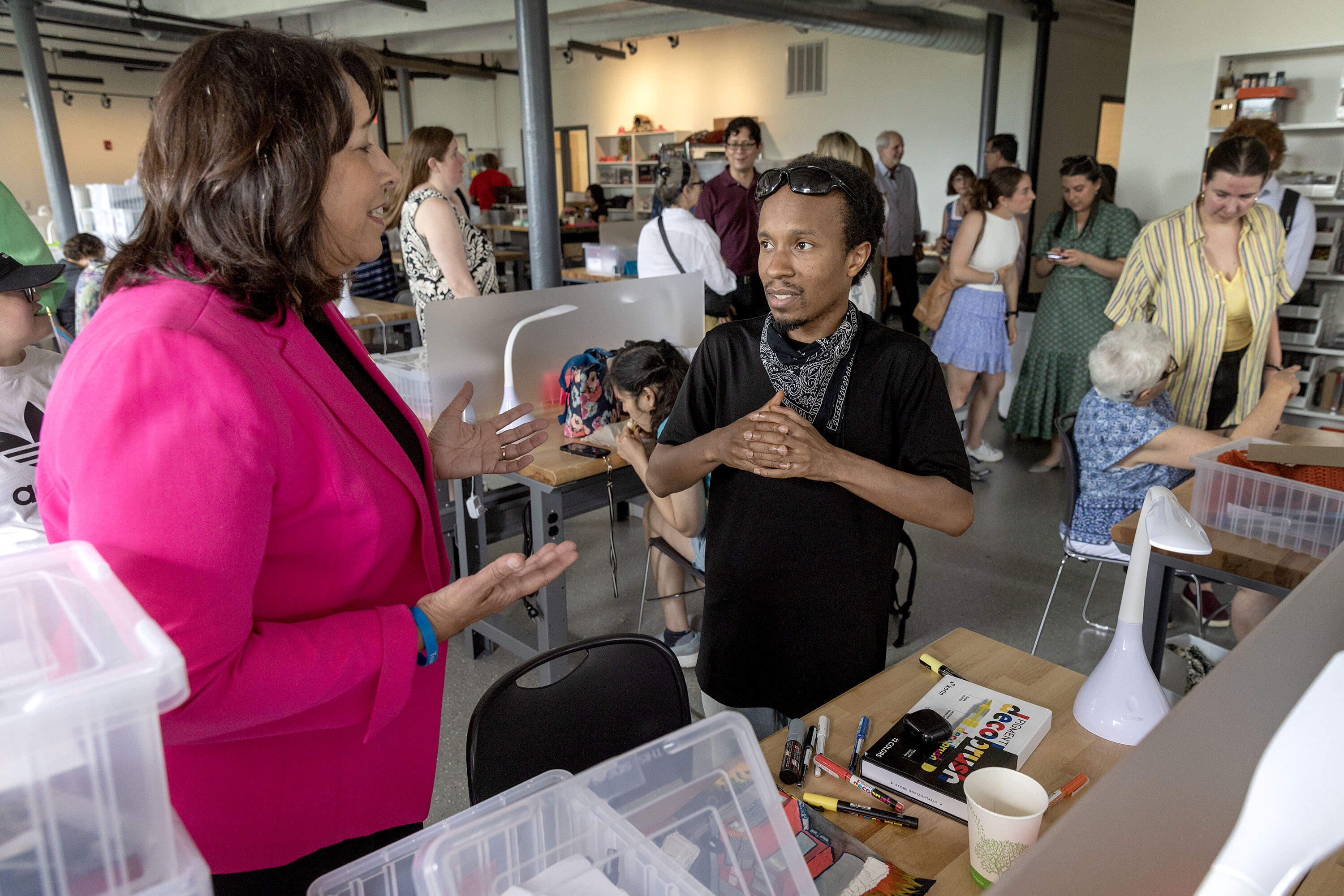
Simpson is one of many artists excited about the new building. But for her, it doesn’t matter where Gateway is — as long as she gets to keep creating art. “Gateway has changed a lot for me,” she said. “It kind of encouraged me to love doing art. It has added a good thing to my life.”
Liakos has hopes of forming partnerships with other arts organizations and utilizing the space to execute more programming that will bring the surrounding community into the center. It’s all a part of the center’s mission to make the arts landscape in Greater Boston more inclusive for artists like Simpson.
“ I think about this as a leveraging the power of art and creative expression to break down those barriers between people with disabilities and the rest of the world.”
This segment aired on July 10, 2025.
